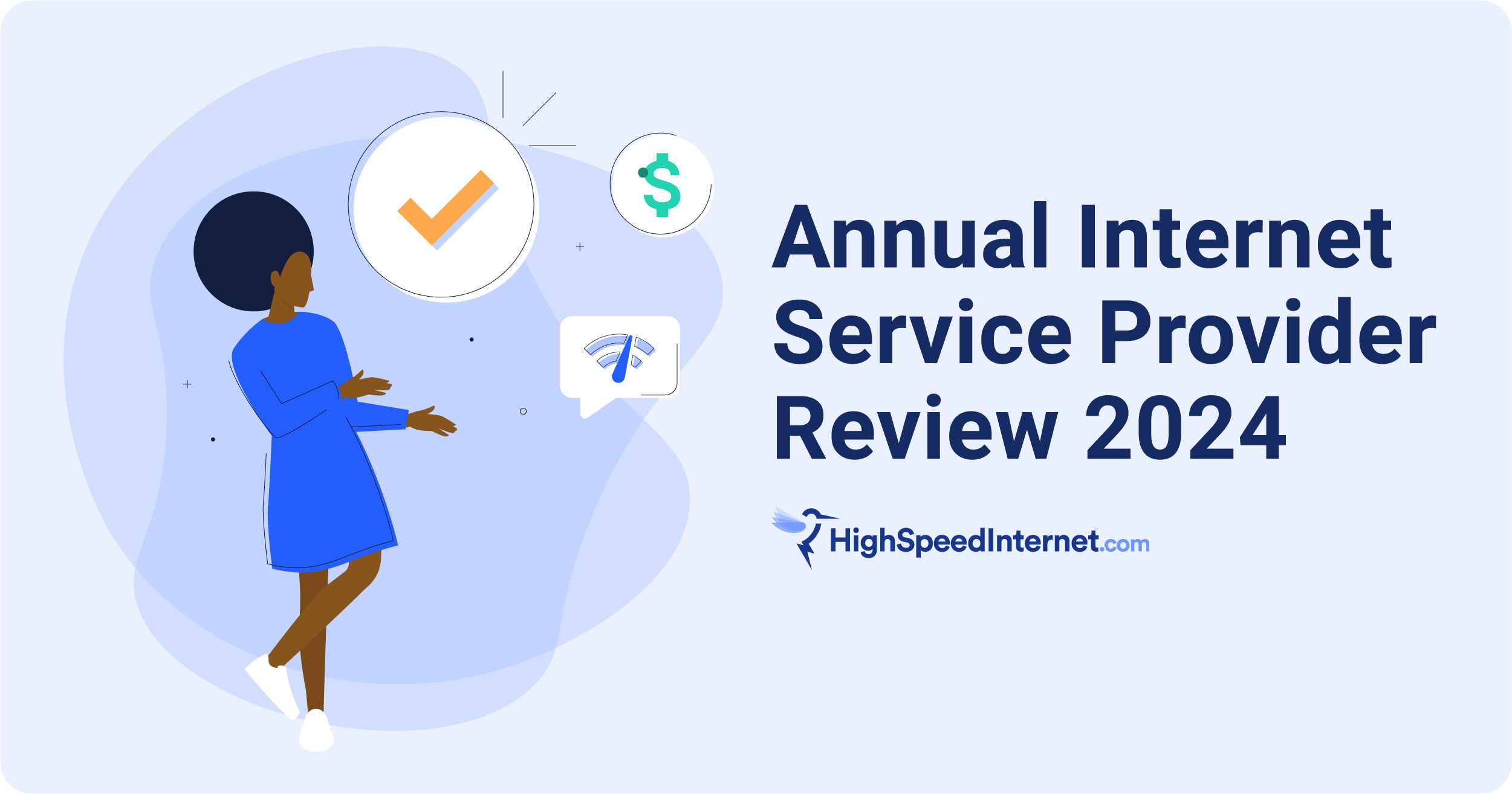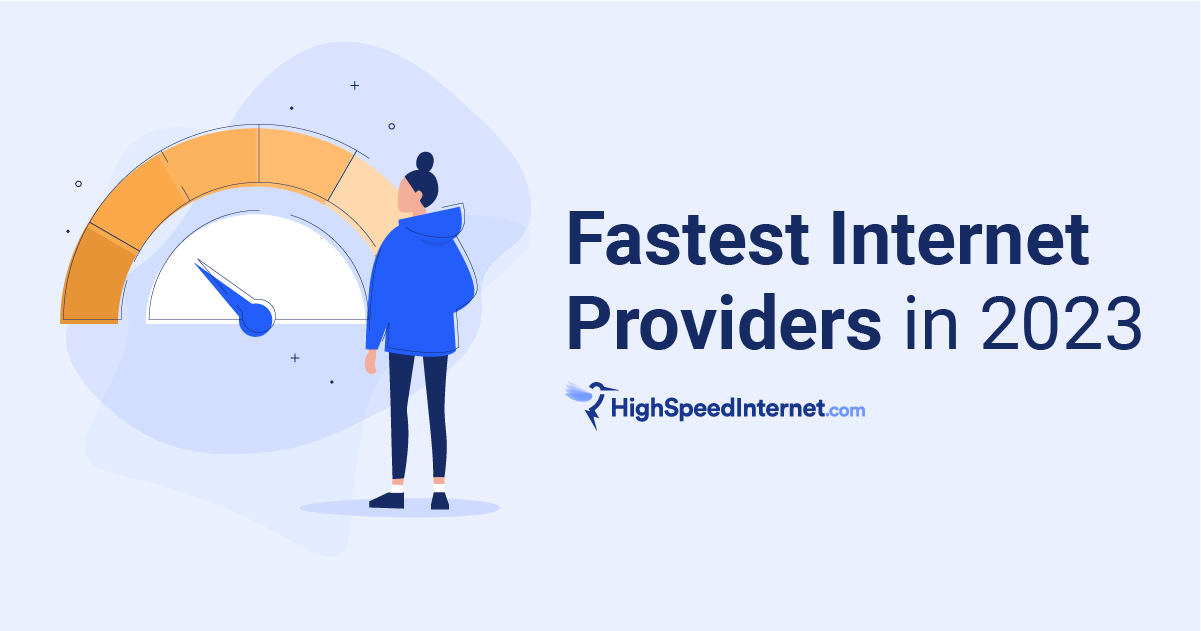Your Guide to Internet Service During New Coronavirus (COVID-19) Pandemic
May 11, 2021 | Share
Featured
We’ve been living under the spectre of the COVID-19 pandemic for nearly a year, now. Though vaccine rollouts give us a reason for hope, we’re all relying on the internet more than ever during this period of social distancing and isolation. So we compiled everything you need to know about internet access during the COVID-19 pandemic to help you stay connected to school, work, and loved ones.
Can I get no-cost internet during the COVID-19 pandemic?
Some internet providers are waiving the cost of some of their internet plans for the first two months for people affected by the pandemic. It’s not exactly free, but you can get no-cost, in-home internet for up to sixty days during the COVID-19 pandemic if you qualify for certain low-income internet programs or have a student living in your household. Here’s a list of the internet providers offering limited, no-cost internet services during the outbreak.
Provider | Service | Who qualifies | Offer | How to get it |
|---|---|---|---|---|
| Altice Optimum | Altice Advantage Internet with speeds up to 30 Mbps | New customers with K–12 or college students in household | No cost for 60 days ($14.99/mo. after)* | Call 1-866-200-9522 or learn more |
| Charter Spectrum | Internet up to 300 Mbps (wireless speeds may vary), no installation fees | New customers with K–12, college students, or educators in household | No cost for first 60 days | Call 1-844-310-1198 Or learn more |
| Charter Spectrum | Open access to Spectrum WiFi hotspots | Anyone near an existing Spectrum WiFi hotspot | Free WiFi access using Spectrum’s public WiFi hotspots | Learn more |
| Comcast Xfinity | Internet Essentials package with speeds up to 100Mbps | New Xfinity customers who are eligible for public assistance programs | Learn more | |
| Comcast Xfinity | Free access to public Xfinity Wi-Fi hotspots | Anyone near an existing Xfinity Wi-Fi hotspot | Open use of public Xfinity Wi-Fi hotspots through June 30, 2021 | Learn more |
Provider | Altice Optimum |
Service | Altice Advantage Internet with speeds up to 30 Mbps |
Who qualifies | New customers with K–12 or college students in household |
| Offer | No cost for 60 days ($14.99/mo. after)* |
How to get it | Call 1-866-200-9522 or learn more |
Provider | Charter Spectrum |
Service | Internet up to 300 Mbps (wireless speeds may vary), no installation fees |
Who qualifies | New customers with K–12, college students, or educators in household |
| Offer | No cost for first 60 days |
How to get it | Call 1-844-310-1198 Or learn more |
Provider | Charter Spectrum |
Service | Open access to Spectrum WiFi hotspots |
Who qualifies | Anyone near an existing Spectrum WiFi hotspot |
| Offer | Free WiFi access using Spectrum’s public WiFi hotspots |
How to get it | Learn more |
Provider | Comcast Xfinity |
Service | Internet Essentials package with speeds up to 100Mbps |
Who qualifies | New Xfinity customers who are eligible for public assistance programs |
| Offer | |
How to get it | Learn more |
Provider | Comcast Xfinity |
Service | Free access to public Xfinity Wi-Fi hotspots |
Who qualifies | Anyone near an existing Xfinity Wi-Fi hotspot |
| Offer | Open use of public Xfinity Wi-Fi hotspots through June 30, 2021 |
How to get it | Learn more |
Data effective 1/19/21. Not all offers available in all areas. Prices and packages are subject to change.
* Plus taxes and installation fee
† Plus taxes and installation fee
‡ Per month + tax
Pro tip:
Though they may not be free, there are a ton of ways to save money on internet if you know where to look. Check out some of our guides to low-income, free, and discounted internet services.
How does the COVID-19 pandemic affect internet speeds?
Internet speeds aren’t directly affected by the COVID-19 virus, but they can be affected by everyone staying inside to help prevent its spread. You may have noticed more sluggish internet speeds in the past year. This could be for two reasons:
- Your pandemic activities require more internet bandwidth than before.
- Your internet service provider’s (ISP’s) network infrastructure is congested from increased use.
Either way, it’s annoying when your internet connection slows down in the middle of a Zoom call or when you’re trying to submit an assignment.
Pro tip:
If your internet seems slower than usual, run an internet speed test. It’ll help you see what speeds you actually have to work with. From there, you can compare your results against the internet speed you should be getting from your provider. If they don’t match up, it might be time for a new plan or provider.
If you’re getting the correct speeds to your home but your connections still seem slow, it’s probably an issue with your home network. To fix it, you either need to troubleshoot your home network or upgrade your internet plan to a faster speed.
Check out all the internet speeds and plan options in your area.
If I’m working from home, how much internet speed do I need?
To give a broad recommendation, 10 Mbps of download speed and 1 Mbps of upload speed of dedicated bandwidth is a good internet speed for a person working from home. But how much speed you need to work from home depends on how you work and who else is using the internet. You might be able to get away with less, or you could need more.
For example, constant video conference calls will use more internet speed than emailing your coworkers or writing in Google Docs. And if your whole family is stuck at home trying to stay entertained online, you’ll need more bandwidth.
Pro tip:
Read more about how much internet speed you need for specific WFH tasks like video conferencing, email, and file sharing with our guide to internet speeds for working from home.
And if you want to know about Zoom specifically, we have a guide for how much internet speed you need for Zoom.
Will my internet service be shut off if I can’t pay my bill during the COVID-19 pandemic?
It’s possible that you may lose service if you cannot pay your internet bill, but many ISPs are working with customers to create flexible payment plans to prevent discontinuing service. This is continuing in the spirit of the Keep Americans Connected Pledge—a program put in place by the FCC early in the pandemic to make sure Americans had access to the internet during the initial lockdowns.
Though the pledge expired mid-2020, many ISPs still choose to work with customers who reach out about financial hardships. The best advice here is to let your provider know if you can’t pay your bill and work out a plan that keeps you online.
For example, Cox has announced that it’s dedicated to finding flexible payment plans for customers affected by the pandemic through June 2021.
Another example is the Emergency Broadband Benefit. If you’re suffering from financial hardships due to the pandemic, you could receive up to $50–$75 off your monthly broadband bill. Other qualifications include households with children enrolled in breakfast or lunch discounts, Lifeline members, and more. Learn more about how to qualify for the Emergency Broadband Benefit.
Will my internet data cap stay the same during the COVID-19 outbreak?
At the beginning of the COVID-19 pandemic, many internet providers waived fees for going over your data cap. It’s been nearly a year since then, and most are back to enforcing their data caps—though providers like Xfinity and Cox have permanently increased data caps on most plans.
If you’re feeling a little restricted by a monthly data allotment, more internet services than ever offer plans with unlimited data.
Pro tip:
You can read more in-depth information about internet data caps and which providers have them in our guide to ISPs with data caps.
Can I switch internet companies during the COVID-19 pandemic?
Yes, you can still switch internet service providers or plans, and now is a good time to switch if you find your current internet connection can’t keep up with all your social-distancing activities online. Start out by calling your provider to see about an upgrade. It can save you some hassle, and you might even end up with a better price.
If you’re set on switching providers, make sure that you’re not under a contract agreement before you switch—otherwise you might find yourself with some unpleasant fines and early termination fees (ETFs). On the upside, many providers offer new discounts to new customers, and you might be able to install your new service yourself.
Need a change of pace?
See all the internet providers in your area to compare other options.
Author - Rebecca Lee Armstrong
Rebecca Lee Armstrong has more than six years of experience writing about tech and the internet, with a specialty in hands-on testing. She started writing tech product and service reviews while finishing her BFA in creative writing at the University of Evansville and has found her niche writing about home networking, routers, and internet access at HighSpeedInternet.com. Her work has also been featured on Top Ten Reviews, MacSources, Windows Central, Android Central, Best Company, TechnoFAQ, and iMore.
Editor - Cara Haynes
Cara Haynes has been editing and writing in the digital space for seven years, and she's edited all things internet for HighSpeedInternet.com for five years. She graduated with a BA in English and a minor in editing from Brigham Young University. When she's not editing, she makes tech accessible through her freelance writing for brands like Pluralsight. She believes no one should feel lost in internet land and that a good internet connection significantly extends your life span.





